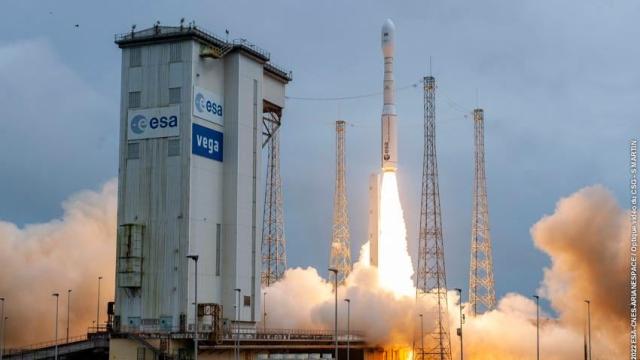After a disheartening failure in December 2022, the return flight of Europe’s Vega-C rocket has been pushed to late 2024. The delay, just revealed by the European Space Agency, stems from a required redesign of the rocket’s motor nozzle.
The 35-metre-tall rocket’s misfortune struck just 2 minutes and 27 seconds after its departure from the Kourou space base in French Guiana during its second flight late last year. As a result, the Neo 5 and Neo 6 satellites—key parts of Airbus’ Pléiades Neo Earth-imaging constellation—were destroyed before reaching orbit. Vega-C, developed by ESA and operated by Arianespace, is off to a rough start, despite a successful inaugural launch.
An Independent Enquiry Commission launched an investigation after the incident, attributing the rocket’s failure to a gradual deterioration of a second stage nozzle. Specifically, the investigators noted a faulty nozzle throat insert, essentially the section where the fiery exhaust exits the combustion chamber, which experienced “thermo-mechanical over-erosion,” as ESA described it earlier this year. In March, the investigation team advised Avio, the Italy-based manufacturer of the Zefiro 40 second stage, to switch to a new carbon-carbon throat material.
But as ESA acknowledged in a press release issued Monday, Avio’s prescribed fix isn’t working, and in fact, the situation is so bad that the company has now been instructed to sketch up a new design for the nozzle. According to Payload, the nozzle redesign will cost between $US26 million and $US31 million. What’s more, this development will further postpone the relaunch of Vega-C.
Here’s what happened: A static fire test of the tweaked Zefiro 40 engine in June led to significant damage to the engine nozzle, even though Avio had followed the recommendations from the March investigation. The inquiry commission revealed flaws in a component provided by the original Ukrainian supplier of the carbon-carbon material, prompting a switch to Arianegroup as the throat insert provider.
Giovanni Colangelo, ESA’s inspector general, further illuminated the situation, as reported in SpaceNews. Speaking on Monday during a press briefing, Colangelo said the motor faltered roughly 40 seconds into the static fire test, ejecting the newly introduced carbon-carbon throat insert and other nozzle components. The engine continued to run at reduced pressures until its fuel was fully depleted. During flights of Vega-C, the Zefiro 40 second stage is packed with 36.2 tons of solid fuel and can push with a force of about 293,075 pounds. ESA states that the issue observed during the static fire test differs from the problem that caused the rocket’s failure last year.
The Commission laid down several guidelines for Avio: refine the nozzle design of the Zefiro 40 motor, build computer models to better predict engine behavior, and perform two more firing tests. In addition, a collaborative task force led by ESA and Avio will oversee Zefiro 40 nozzle modifications and reviews. The overarching goal is to “ensure a reliable return to flight and a robust commercial exploitation of Vega-C,” ESA stated. The original plan was to get Vega-C flying by the end of 2023, but that’s now been pushed to late 2024.
Naturally, ESA says it’s confident in its partner, emphasizing Avio’s dedication to resolving these challenges and ensuring Vega-C’s eventual return to the skies. Vega-C, equipped with a generous 10.8-foot-wide (3.3-meter) fairing, can haul about 2.3 metric tons to a Sun-synchronous orbit and is Europe’s ticket to launching satellites and other space missions on its own terms.
Related article: Key to Europe’s Space Ambitions, Ariane 6 Rocket Delayed to 2024
The Vega-C snag and the drawn-out Ariane 6 saga show Europe’s space game is stumbling. And it’s not just about tech glitches; these delays can cost big bucks and dent Europe’s space cred. While Avio, ESA, and Arianespace are on damage control, they’re playing catch-up in a global space race that’s waiting for no one. Europe needs to get its rockets firing right, and soon, if it wants to compete in the new space economy.
